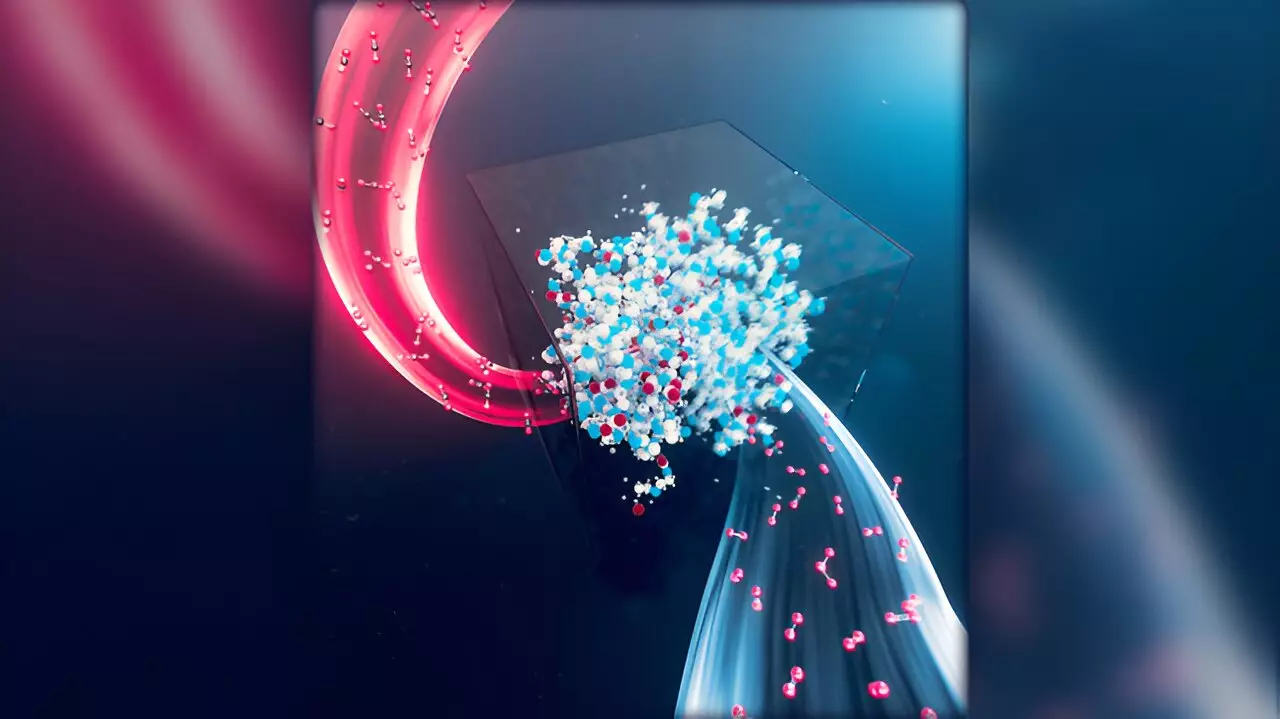At the forefront of environmental science and technology, researchers at Lawrence Livermore National Laboratory (LLNL) in partnership with Georgia Institute of Technology have achieved a vital advancement in understanding the interaction between carbon dioxide (CO2) and amine-functionalized porous solids. This groundbreaking work, highlighted on the cover of the Journal of the American Chemical Society, provides new insights relevant to the optimization of Direct Air Capture (DAC) technologies. These insights are not merely incremental; they represent a shift in how we perceive the underlying mechanisms affecting the stability and efficacy of materials crucial for carbon capture efforts.
Amine-based sorbents like poly(ethylenimine) are essential for capturing CO2, particularly in low-concentration scenarios, where their efficiency defines their practical applications. Nonetheless, long-term durability has remained a pressing issue due to oxidative degradation. The research team has made strides in addressing this issue by unveiling the dual roles CO2 plays in the oxidation kinetics of these sorbents—a departure from previous understandings that failed to reconcile conflicting data. This nuanced exploration reveals that while CO2 accelerates certain oxidation reactions, it concurrently restricts the mobility of polymer branches, resulting in a slowdown of radical propagation. This complex interplay drastically alters how we must consider the design and operation of DAC systems.
The implications of these findings extend well beyond the laboratory; they provide actionable strategies for the design of next-generation sorbents. By pinpointing polymer side chain mobility and the acidic environments as catalysts for oxidation, the researchers have opened new avenues for enhancing sorbent longevity. This research has the potential to guide the development of innovative materials that are not only more effective but also more resilient against deterioration over time. One promising avenue involves modifying the chemical structure of sorbents, adding functional groups or utilizing specific oxide supports that are engineered to minimize polymer movement or neutralize acidic conditions, thereby enhancing stability.
This research represents a pivotal moment in the industry of carbon capture, providing the foundational knowledge necessary for the evolution of DAC technologies. The collaborative efforts of LLNL and Georgia Tech illustrate the critical importance of interdisciplinary research in addressing global challenges like climate change. As we move forward, the findings of this study could pave the way for innovative strategies that not only improve the efficiency and cost-effectiveness of carbon capture methods but also contribute meaningfully to sustainable practices. The journey toward advanced, durable carbon capture technologies is just beginning, and this research is poised to have a lasting impact on the fight against climate change.


Leave a Reply